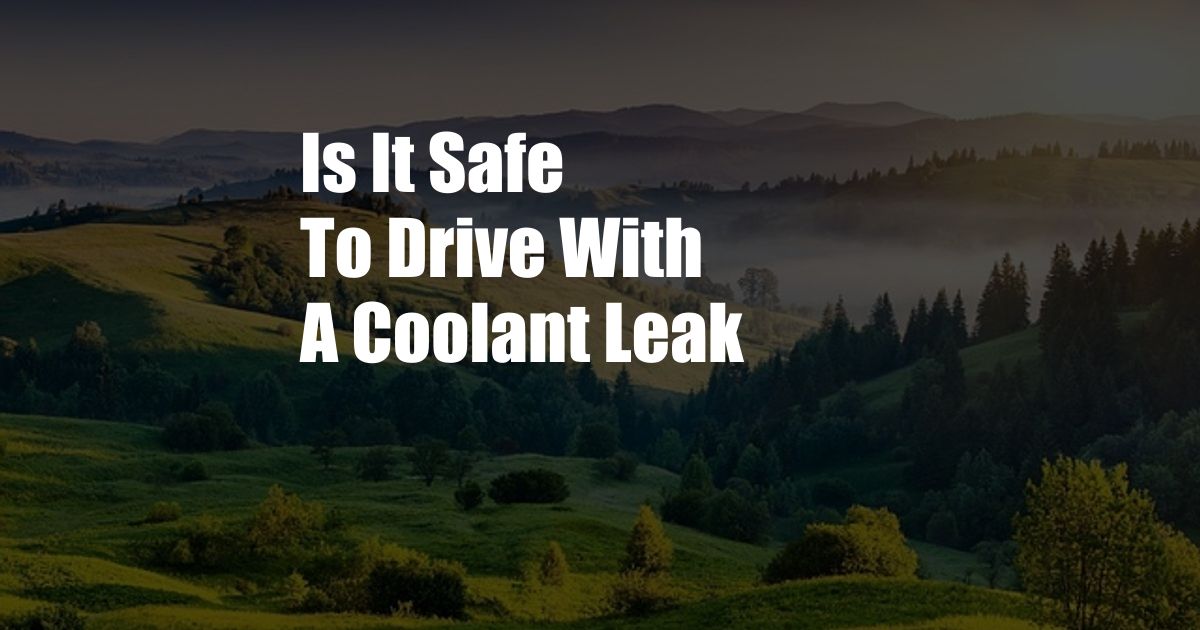
Is It Safe to Drive with a Coolant Leak?
Every car owner knows that regular maintenance is essential for keeping their vehicle running smoothly. But what happens when you have a coolant leak? Is it safe to drive with a coolant leak? The answer is not always straightforward. It depends on the severity of the leak and how far you need to drive.
In this blog post, we will discuss the dangers of driving with a coolant leak, the different types of coolant leaks, and what to do if you find yourself in this situation. We will also provide some tips on how to prevent coolant leaks in the future.
What is a Coolant Leak?
A coolant leak is a leak in the cooling system of your car. The cooling system is responsible for keeping your engine from overheating. It does this by circulating coolant through the engine and radiator. When there is a leak in the cooling system, coolant can escape and cause the engine to overheat.
Types of Coolant Leaks
There are two main types of coolant leaks:
- Small leaks: Small leaks are usually caused by a loose hose clamp or a cracked radiator hose. These leaks are typically not dangerous and can be repaired relatively easily.
- Large leaks: Large leaks are usually caused by a major problem, such as a blown head gasket or a cracked radiator. These leaks can be dangerous and should be repaired immediately.
Dangers of Driving with a Coolant Leak
Driving with a coolant leak can be dangerous because it can cause your engine to overheat. An overheated engine can lead to a number of problems, including:
- Loss of power: An overheated engine can lose power, making it difficult to accelerate or maintain speed.
- Engine damage: An overheated engine can cause serious damage to the engine, including the pistons, cylinders, and valves.
- Fire: In extreme cases, an overheated engine can cause a fire.
What to Do If You Have a Coolant Leak
If you think you have a coolant leak, it is important to take action immediately. Here are the steps you should take:
- Pull over to a safe location. If you are driving, pull over to the side of the road as soon as possible.
- Turn off the engine. Turn off the engine and allow it to cool down.
- Check the coolant level. Open the hood and check the coolant level. If the coolant level is low, it is likely that you have a leak.
- Call for assistance. If you are not comfortable checking the coolant level yourself, call for assistance from a mechanic.
Tips for Preventing Coolant Leaks
There are a few things you can do to prevent coolant leaks:
- Check the coolant level regularly. The coolant level should be checked at least once a month. If the coolant level is low, it is important to find and fix the leak as soon as possible.
- Inspect the cooling system regularly. The cooling system should be inspected at least once a year. This inspection should include checking the hoses, belts, and clamps for any signs of wear or damage.
- Flush the cooling system regularly. The cooling system should be flushed every two to three years. This will help to remove any buildup of sediment or rust that can cause leaks.
Conclusion
Driving with a coolant leak can be dangerous. If you think you have a coolant leak, it is important to take action immediately. By following the tips in this blog post, you can help to prevent coolant leaks and keep your car running smoothly.
Are you interested in learning more about coolant leaks? Let us know in the comments below!